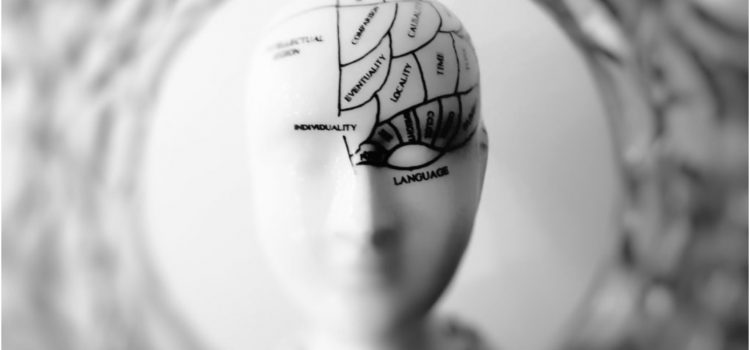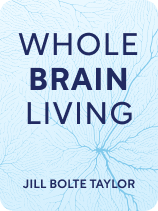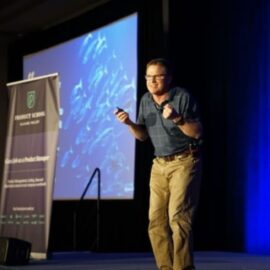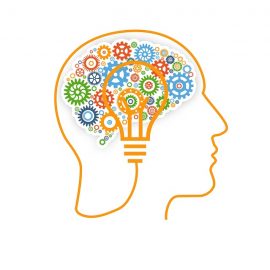

This article is an excerpt from the Shortform book guide to "Whole Brain Living" by Jill Bolte Taylor. Shortform has the world's best summaries and analyses of books you should be reading.
Like this article? Sign up for a free trial here.
What are the functions of the left and right sides of the brain? Which side houses your creative side, and which houses your logical side?
Your brain is split into two teams: the right hemisphere and the left hemisphere. In her book Whole Brain Living, Jill Bolte discusses the role of each side, along with common myths surrounding them.
Let’s look at the left and right brain functions more closely.
The Left and Right Hemispheres
Taylor says that the left and right brain functions are completely different: the left hemisphere of the brain houses our ability to organize information in a linear and ordered way. It allows us to store memories, differentiate between past, present, and future, and recognize the physical boundaries between ourselves and others as well as individual objects. According to Taylor, our left brain is the part of us that loves structure and is motivated by external factors like social acceptance and material possessions.
The right side of the brain contributes to creative skills and big-picture thinking. It processes information purely in the present moment rather than linking it to the past or future. Taylor describes the right hemisphere as our “unconscious” mind that loves unconditionally and understands our energetic connection to everyone and everything in the universe. This is the part of her brain that shaped her transcendental experience when her stroke (caused by a hemorrhage in her left hemisphere) shut down her left-brain cognitive functions.
(Shortform note: Although research supports some of Taylor’s claims about what characteristics are associated with the right hemisphere, others are more difficult to support with scientific evidence. For example, it’s generally accepted that the right hemisphere is linked to artistry and synthesis of information. However, her claims about the unconscious mind and our energetic connection to the rest of the universe require a leap of faith, since it’s not something that can be studied using the scientific method.)
Taylor also clarifies that we use both hemispheres simultaneously since they’re linked by the brain’s network of neurons. She says that each hemisphere simply processes information differently, giving them different strengths, and we can think of each side as constantly competing to influence what we’ll do in response to incoming information.
Exploring Myths and Nuances of the Left and Right Brain Dichotomy
Taylor describes the left and right hemispheres as complementary opposites, each with different and important roles in cognitive processing. However, it’s important to distinguish between Taylor’s framework and debunked myths about the role of each hemisphere.
Myth #1: Each hemisphere is exclusively responsible for certain functions.
Taylor asserts that each hemisphere of the brain offers unique strengths. However, this concept is distinct from that of other writers who overstate the exclusive domain of the right or left hemisphere. For example, in The Whole-Brain Child (2011), Daniel J. Siegel and Tina Payne Bryson claim that the left hemisphere is responsible for things like language and logic, while the right hemisphere is the domain of emotions and memories. As we’ll explore in the next section, the emotional processing centers of the brain—such as the amygdalae and hypothalamuses—exist in both hemispheres.
Recent research also shows that math—a skill that was traditionally attributed to the more logical left hemisphere, requires cognitive processing in both hemispheres. Therefore, neuroscience research suggests (and Taylor seems to agree) that while certain skills may be primarily associated with activity in a certain brain region, it’s also inaccurate to oversimplify the brain by attributing some skills exclusively to one side or the other.
Myth #2: People are either left- or right-brain dominant by nature.
A related myth is the idea that each individual is either left- or right-brain dominant. There’s a consensus that this concept is inaccurate, and one study specifically shows that both hemispheres are equally active in individuals regardless of their personality traits. While Taylor occasionally makes statements like “My left brain dominated my mindset before my stroke,” she clarifies that this means she tended to focus on and act on the desires of her left hemisphere—not that her left hemisphere was the main part of her brain that was active at the time.
Taylor also doesn’t go so far as to say that we’re inherently or permanently dominated by one hemisphere or the other, as some people claim in popular psychology. Instead, she asserts that we control which hemisphere influences our behavior (an idea we’ll explore in depth later in the guide). Although there’s no research study that definitively proves we have agency over our left or right brain impulses, there’s extensive research that shows we have neuroplasticity—an ability to change cognitive patterns in general.

———End of Preview———
Like what you just read? Read the rest of the world's best book summary and analysis of Jill Bolte Taylor's "Whole Brain Living" at Shortform.
Here's what you'll find in our full Whole Brain Living summary:
- How you can choose to access different parts of your brain
- The four areas of the brain that perceive and navigate the world differently
- How to achieve emotional well-being by getting to know your brain better






